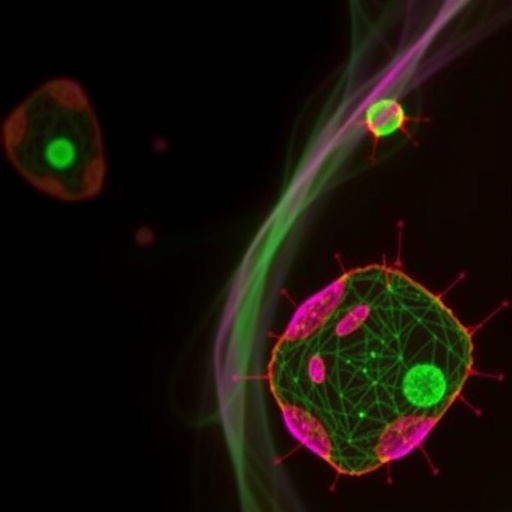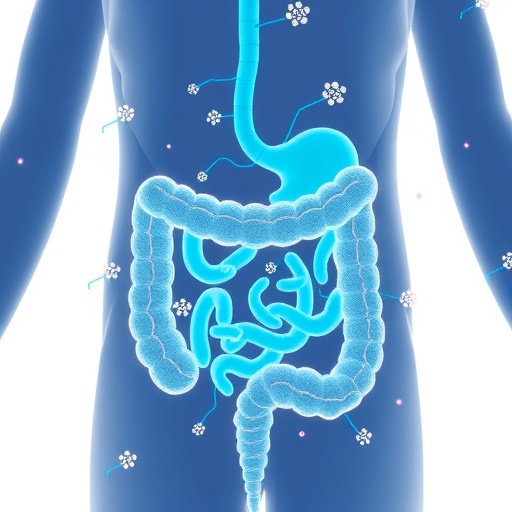A groundbreaking study has unveiled the promising therapeutic potential of combining hydralazine, a well-known antihypertensive agent, with all-trans retinoic acid (ATRA), a vitamin A derivative, to target and inhibit breast cancer cells. Published in the prestigious journal BMC Cancer, this investigation delves deep into the molecular interplay and biological pathways that dictate cancer cell survival and proliferation, revealing new avenues for treatment with minimized side effects.
Breast cancer remains a leading cause of cancer morbidity and mortality among women worldwide. Despite advances in detection and therapy, resistance to single-agent treatments and adverse side effects continue to challenge clinicians and researchers alike. Combination therapy has emerged as a strategic solution, offering a multifaceted attack on tumor cells while potentially reducing drug dosages and limiting resistance development. This study specifically highlights the novel pairing of hydralazine and ATRA as a promising example of such an approach.
Hydralazine, traditionally prescribed for hypertension, has gained attention in oncology due to its epigenetic effects, specifically its ability to reverse DNA methylation patterns in cancer cells. These epigenetic modifications often silence tumor suppressor genes, promoting unchecked cell growth. By demethylating DNA, hydralazine can reactivate these critical genes, disrupting malignant processes. However, paradoxically, hydralazine alone was observed in this study to stimulate breast cancer cell growth, underscoring the complexity of its biological effects.
All-trans retinoic acid, on the other hand, is a metabolite of vitamin A that regulates gene expression by binding to nuclear retinoic acid receptors. ATRA plays vital roles in cell differentiation, proliferation, and apoptosis, making it an attractive candidate in cancer therapy. Deficiency in vitamin A and its derivatives has been implicated in the progression of varied disease states, including malignancies. In this investigation, ATRA alone reduced viability in both cancerous and normal cells, reflecting its potent biological influence but also raising concerns about toxicity.
The crux of this research lies in examining the combined effects of hydralazine and ATRA on breast cancer cells versus normal cells. Using robust bioinformatics analyses, the authors identified key pathways such as Hypoxia-Inducible Factor 1 (HIF-1), Vascular Endothelial Growth Factor (VEGF), and WNT signaling as critical mediators of breast cancer progression. These pathways regulate crucial genes including CCND1, VEGFA, VEGFA2, HIF1A, and the antisense transcript HIF1A-AS, which collectively influence tumor growth, angiogenesis, and adaptation to hypoxic tumor microenvironments.
Experimentally, the study employed two cell lines: MDA-MB-231, representing aggressive triple-negative breast cancer cells, and MCF10, a non-tumorigenic mammary epithelial cell line. Employing the MTT assay, researchers calculated the half-maximal inhibitory concentrations (IC50) of hydralazine and ATRA, both alone and in combination. While hydralazine alone unexpectedly promoted MDA-MB-231 proliferation, ATRA reduced survival rates in both cell types, although with significant toxicity to normal cells.
Strikingly, the combination of hydralazine and ATRA produced a synergistic effect, significantly suppressing breast cancer cell viability while preserving the survival of normal mammary cells. This differential cytotoxicity highlights the therapeutic window that the drug pairing may exploit, enhancing cancer cell killing while minimizing collateral damage to healthy tissues—a critical consideration for clinical applications.
Further mechanistic insights were obtained through wound healing assays, revealing that the combination impairs the migratory capacity of cancer cells, a hallmark of metastatic potential. Real-time PCR analyses substantiated these phenotypic observations, demonstrating downregulation in the expression of oncogenes and hypoxia-associated genes, effectively targeting cancer cells’ ability to adapt and survive under low-oxygen conditions commonly seen in solid tumors.
The implications of interfering with hypoxia pathways hold particular promise. Hypoxic environments within tumors are notorious for fostering aggressive cancer phenotypes, contributing to resistance against conventional therapies and fueling vascular proliferation through VEGF signaling. By disrupting HIF-1 and VEGF activity, the hydralazine/ATRA regimen potentially starves the tumor of critical survival cues, amplifying therapeutic efficacy.
Importantly, the study addresses a significant challenge in cancer treatment: medicinal toxicity. ATRA’s efficacy is often counterbalanced by its adverse effects on normal cells, but its combination with hydralazine appears to mitigate this issue, offering a more targeted and less harmful approach to breast cancer management. This finding paves the way for future in vivo studies and clinical trials to evaluate the treatment’s safety and effectiveness on a systemic level.
Moreover, this research underscores the value of integrating computational bioinformatics with empirical laboratory work to unravel complex disease pathways and drug interactions. The bioinformatic prioritization of candidate gene targets, combined with rigorous experimental validation, exemplifies a powerful paradigm in the rational design of novel cancer therapeutics.
While these promising results lay strong groundwork, the authors emphasize that clinical trial validation remains necessary. The current investigation was preclinical, focusing on established cell lines and molecular assays. Future studies aimed at exploring pharmacokinetics, dosing strategies, and long-term outcomes in animal models and patients will be crucial for translating these findings to bedside applications.
This innovative study contributes to the expanding field of epigenetic therapies in oncology. By illuminating how a repurposed antihypertensive drug can synergize with a vitamin A derivative to selectively hinder breast cancer cell proliferation and stress adaptation, it opens exciting prospects for more effective, personalized cancer treatments.
In conclusion, the hydralazine and all-trans retinoic acid combination emerges as a compelling candidate for targeted breast cancer therapy. Its ability to differentially affect malignant and normal cells while impacting key biological pathways central to tumor survival represents a beacon of hope in the ongoing battle against breast cancer—potentially ushering in treatments that are as strategically nuanced as the disease itself.
Subject of Research: Combination of hydralazine and all-trans retinoic acid targeting breast cancer cells.
Article Title: Combination of hydralazine and all-trans retinoic acid targeting breast cancer cells.
Article References:
Yahyapour, A., Askari, N. & Yaghoobi, M.M. Combination of hydralazine and all-trans retinoic acid targeting breast cancer cells. BMC Cancer 25, 1427 (2025). https://doi.org/10.1186/s12885-025-14477-2
Image Credits: Scienmag.com
DOI: https://doi.org/10.1186/s12885-025-14477-2
Tags: all-trans retinoic acid for cancer therapyantihypertensive agents in oncologyBMC Cancer study on breast cancercancer cell survival pathwayscombination therapy for breast cancerDNA methylation reversal in cancerepigenetic effects of hydralazinehydralazine and breast cancer treatmentminimizing side effects in cancer treatmentnovel cancer treatment strategiesresistance to cancer treatmentstargeted therapy for breast cancer cells





